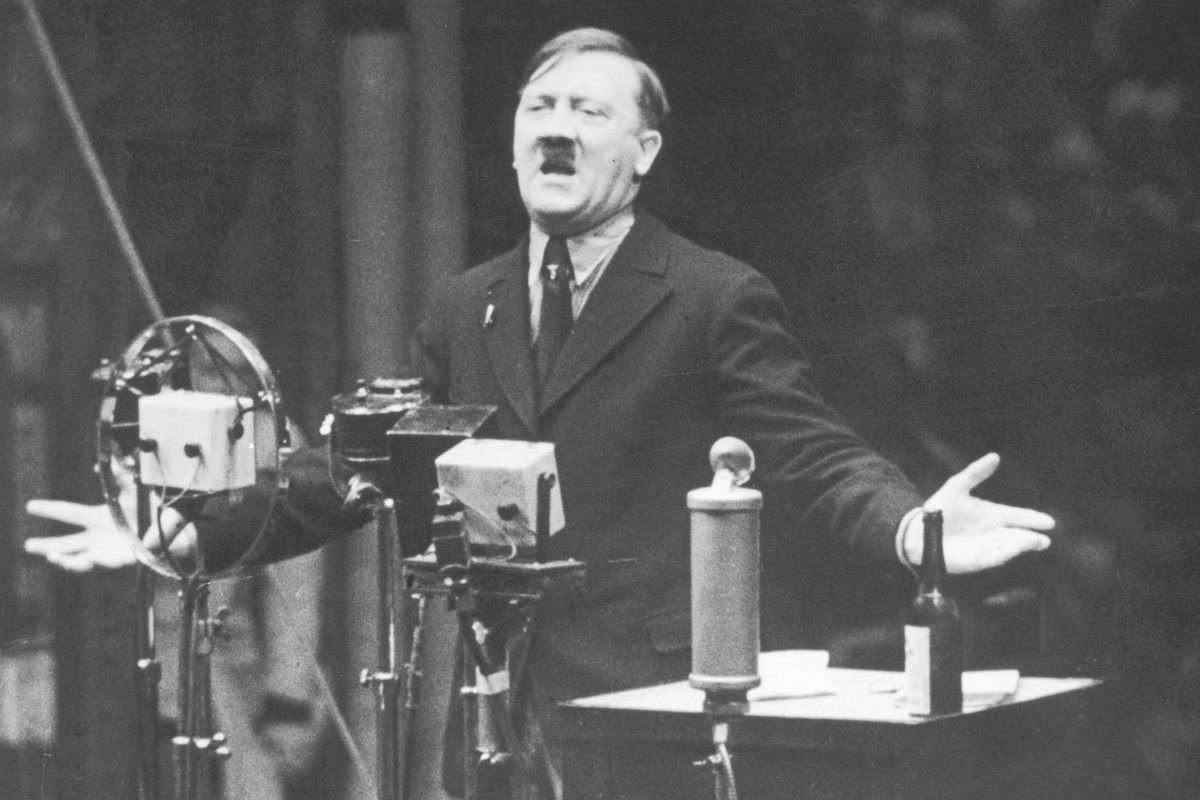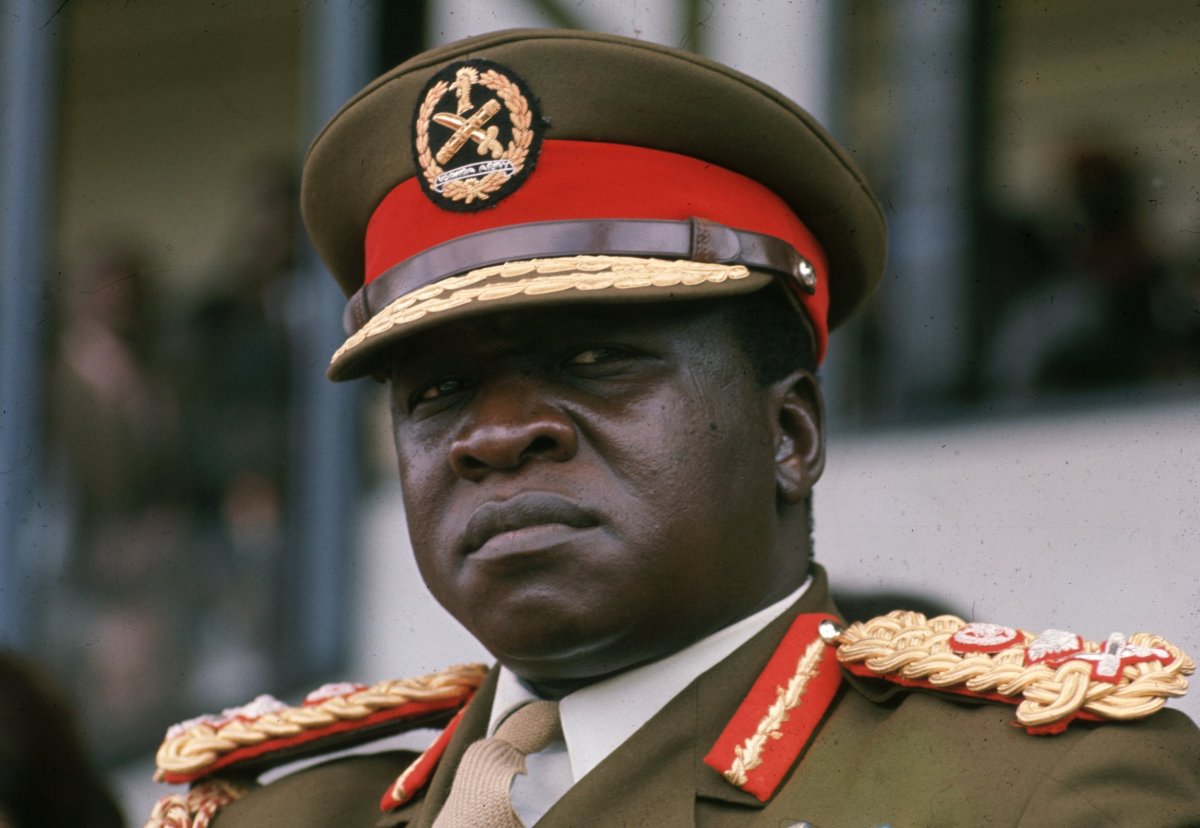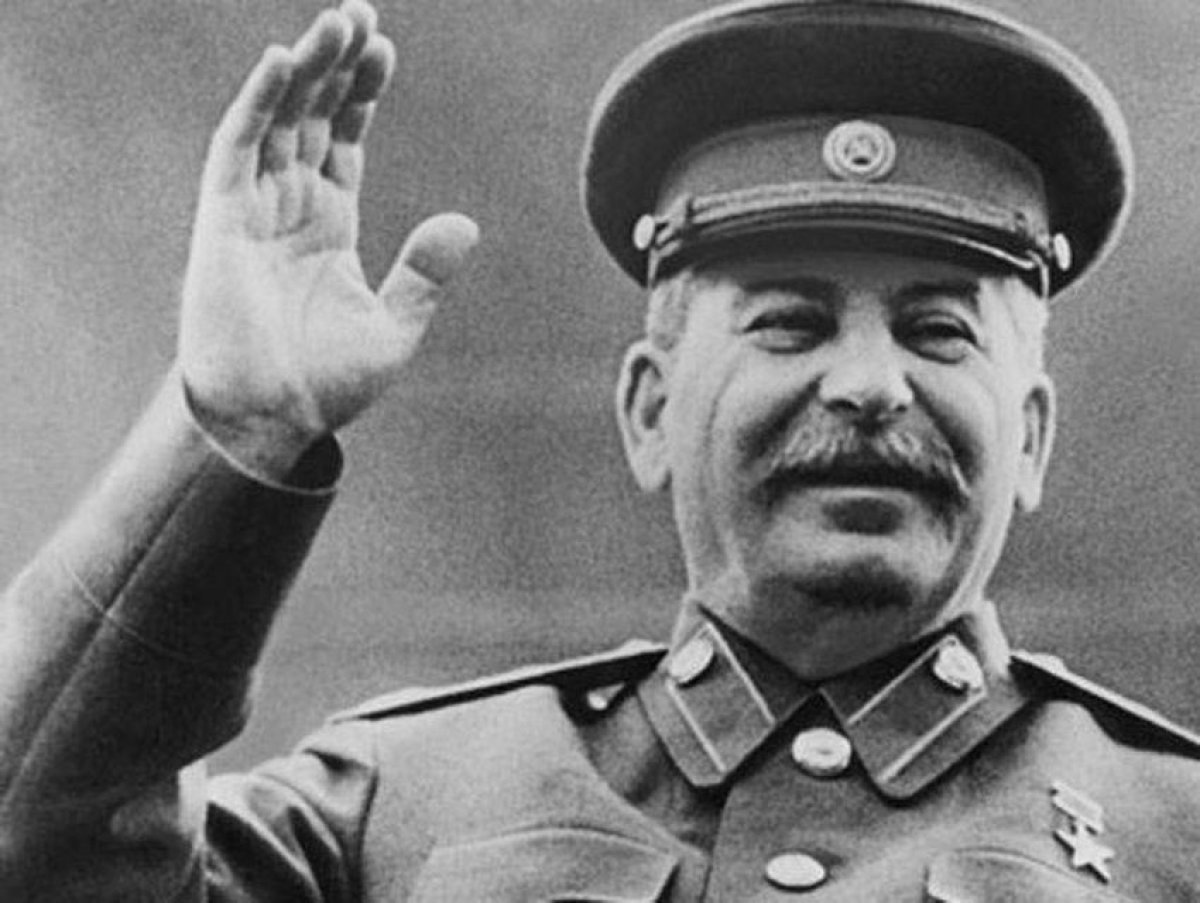The 20th century was packed with despicable men who sought power at any cost. In a new documentary series on Netflix, Peter Dinklage narrates their stories, revealing the "playbook" on How to Become a Tyrant.
The docu-series travels all over the world, revisiting the stories of despots from Europe, Africa and Asia, and exploring how they massacred their citizens, started wars and tried to crush anyone who got in their way.
It has been widely reported that the show is based on the book The Dictator's Handbook by Bruce Bueno de Mesquita and Alastair Smith but the production team denied this when asked by Newsweek.
A spokesperson said: "It actually is not based on anything in specific. The production company, Citizen Jones' Jonah Bekhor and Jonas Bell Pasht is behind the series.
"They wanted to make a series that explored the topic of tyranny in a really fresh, provocative way. There has been a disturbing rise in authoritarian impulses around the globe. And this subject feels urgent and important.
"It turns out that all tyrants—past and present—follow a nearly-identical playbook to achieve ultimate power, and we wanted to reveal those tactics in manner that would grab viewer's attention."
Each of the six episodes focuses on a different aspect of how 20th-century dictators grabbed power—and kept it.
The Tyrant's Playbook, Episode 1: 'Seize Power'

The first episode focuses on Adolf Hitler, who rose to prominence as Germany was reeling from its defeat in the First World War.
It explores how he presented himself in the 1920s, as a man who was on the same wavelength as the German people but also had an unshakeable self-belief.
He convinced people that he had survived the First World War because he had a visionary mission to save his country, gaining followers with furious rants and racist conspiracy theories.
His oratory and propaganda took the Nazi Party from a small grouping of far-right German nationalists in 1920, to the totalitarian regime that systemically murdered millions of people in the Holocaust and provoked the Second World War.
The documentary suggests that Hitler's famous moustache was one of the props he used to present himself as a man of the people. It later became the fashion for working-class German men.
Episode 2: 'Crush Your Rivals'

The second episode outlines how Saddam Hussein annihilated his opponents to hold on to power for more than 20 years. It explains how the Iraqi dictator conducted high-level surveillance of people he mistrusted, and tortured and blackmailed his rivals.
In his Ba'ath Party Purge of 1979, a political leader who had been tortured by Saddam's men was ordered to read out a "confession" about his role in a plot to overthrow the government and name 68 supposed co-conspirators—who were in the room at the time. These men were removed and arrested. Some were later executed for treason, while others were forced to carry out the executions.
A video of this meeting was then circulated, to send the message of what could happen to those who were disloyal to Saddam.
Episode 3: 'Reign Through Terror'

Idi Amin is the focus of the third episode, which begins with the frightening statistic that 300,000 Ugandans went missing during his years in power and mainly on his orders.
In 1971, he led a military coup and declared himself president. Just six months later, he was accused of committing ethnic cleansing and ordering massacres.
One incident that brought wider attention to his brutality was the disappearance of two Americans, reporter Nicholas Stroh and lecturer Robert Siedle, who had gone to investigate reports of massacres outside Kampala, the capital.
The documentary relates that Amin's men killed them, burned the bodies and dumped them in a river—but Amin pressed no charges and closed the investigation.
Despite international pressure over the deaths, the documentary explains how Amin found and used a scapegoat to keep his people loyal.
Episode 4: 'Control the Truth'

Questioning the man in power is an absolute no-no, Episode 4 explains, and Joseph Stalin knew this better than anyone.
The Soviet dictator used propaganda, as well as far more horrific methods, to muzzle truth-tellers and make sure his version of events became the official history.
As a young man he was the leader of a terrorist group fighting to bring down the Russian government, which caught the attention of Lenin.
In the period before Lenin's death in 1924, however, the two men were in conflict. So, Stalin rewrote history, even circulating a retouched photograph of himself and Lenin to suggest they had a close, personal bond and that he would be the ideal successor.
Once he had taken power, Stalin used strong censorship of the media to ensure his position could not be weakened by reports containing inconvenient truths.
Episode 5: 'Create a New Society'

The fifth episode suggests that Libyan despot Muammar Gaddafi genuinely wanted to create a utopian version of his country—until he became wrapped up in selfishness and greed.
Gaddafi decided that he needed to "be the law" in order to start this society, which led him to implement legislation against actions as simple as hailing a taxi or eating chicken from overseas.
Student protesters who took against these rules were detained or killed—and April 7 became a national holiday in the country, when Gaddafi would order rivals and critics to be rounded up to show his power.
The documentary also explores how Gaddafi tried to cement his legacy with a massive project, the Great Man-Made River, which he called the Eighth Wonder of the World, and his Green Book of political philosophy, which he used to run the country.
Episode 6: 'Rule Forever'

Many dictators dream of ruling forever—and the Kim dynasty of North Korea has come closer than most, imposing a doctrine that only members of its bloodline can lead the country.
It started with Kim Il-sung, known as the Eternal Leader or Great Leader, who became the first president of North Korea in 1948 after its liberation from Japan—and took some notes from his mentor Stalin on how to run things.
To keep North Korea following in his path, Kim Il-sung isolated his country using a philosophy called Juche, meaning self-reliance.
The Kim dynasty wanted to be something like a monarchy and, in 1966, the Eternal Leader's eldest son Kim Jong-il made his play to be heir-apparent to the throne, by offering to take over propaganda operations.
This impressed his father immensely. Kim Jong-il continued his efforts to create narratives that would keep his family in power, kidnapping South Korean director Shin Sang-ok and his actress wife Choi Eun-hee in the late 1970s and forcing them to make propaganda movies for North Korea.
Ultimately, the Kim dynasty secured fear internationally through threats of nuclear war. Kim Jong-il succeeded his father in 1994 and ruled until his own death in 2011. Today North Korea is controlled by his son, Kim Jong-un.
How to Become a Tyrant is streaming now on Netflix.
Update 8/5/21, 3:30 a.m. ET: This article was updated with comment.
Uncommon Knowledge
Newsweek is committed to challenging conventional wisdom and finding connections in the search for common ground.
Newsweek is committed to challenging conventional wisdom and finding connections in the search for common ground.
About the writer
To read how Newsweek uses AI as a newsroom tool, Click here.








